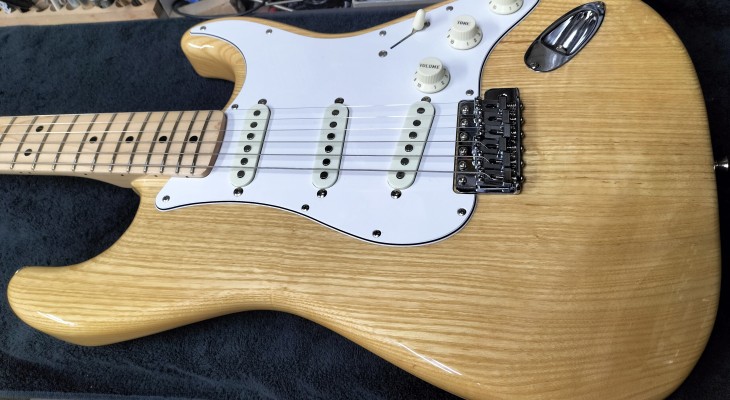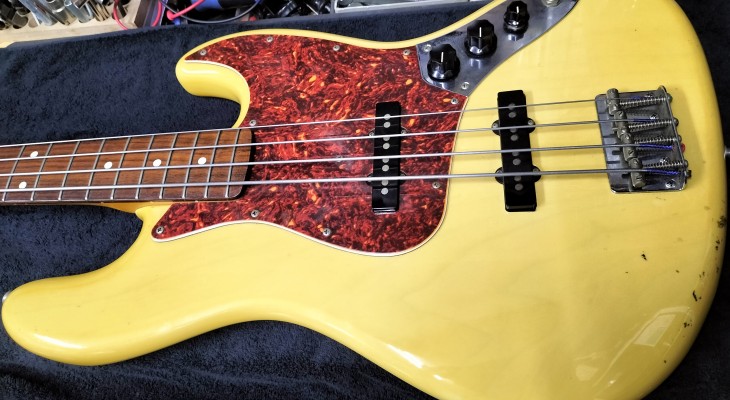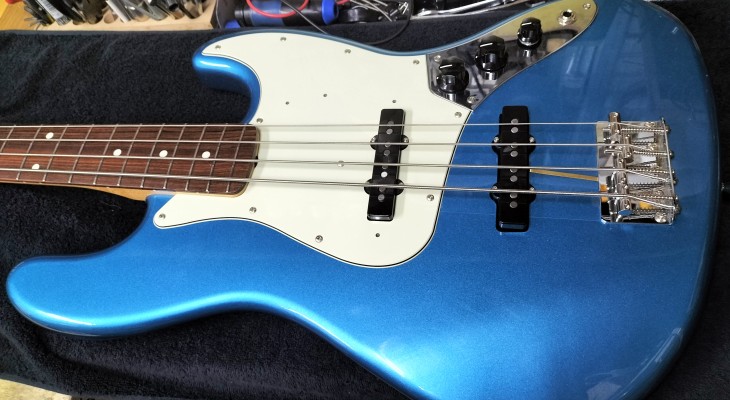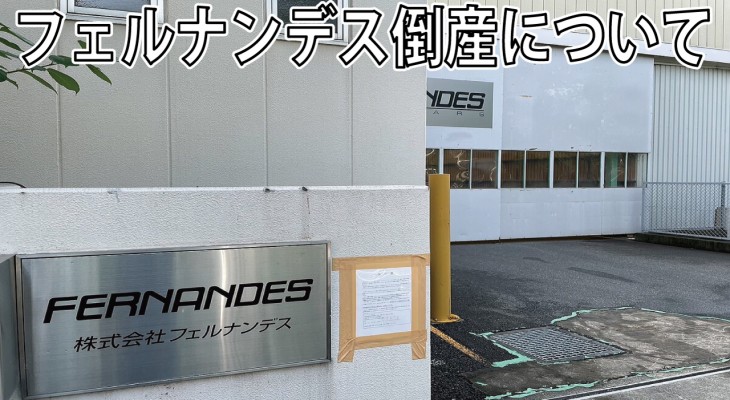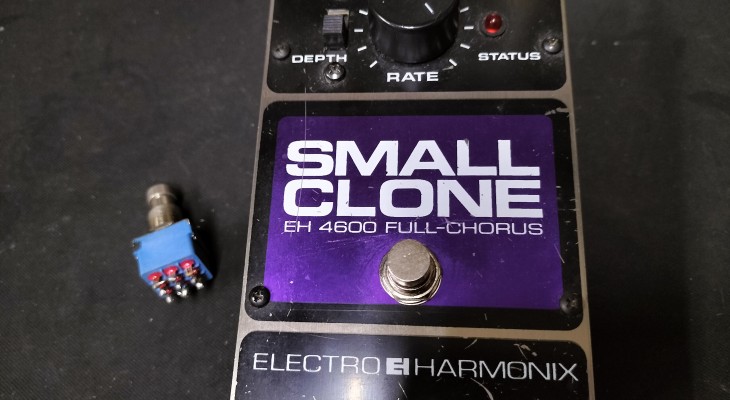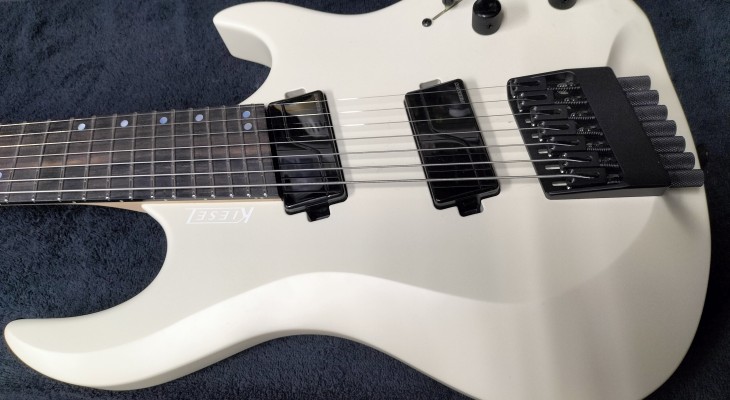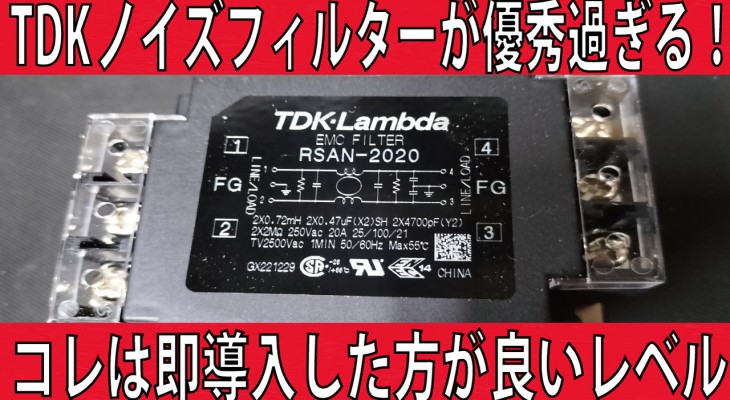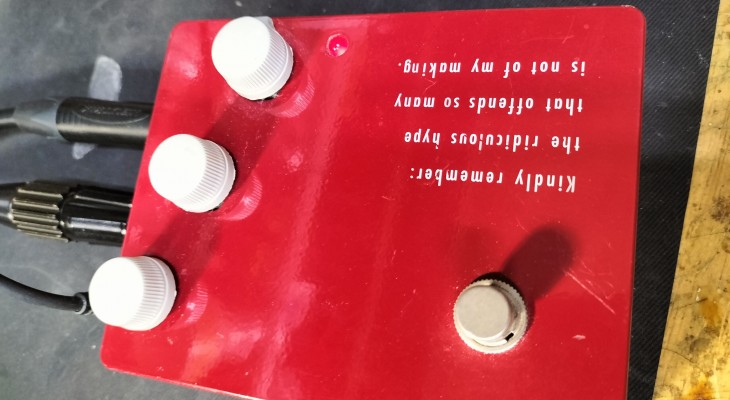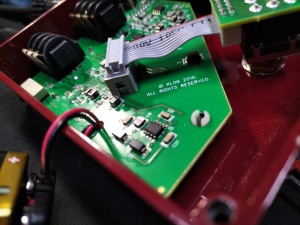


ディーン製MLのフロイドローズ難点修理・セットアップです。
今回はフロイドローズで起こるトラブルが多数起きた状態の修理です。
メルカリで購入したとの事ですがかなり状態が悪く、当然ながらこれら状態は知らされていないとの事です。
スタッドブッシュ抜けにより弦を張ると弦高が上がってくる(当然アームを使うのはNG)、ナイフエッジ消耗でチューニングが不安、サドルの弦をロックするビス山が壊れて弦が張れない状態です。
ビス部は確実に素人作業で壊した物ですね。
ナイフエッジの消耗は基本的に起こります。弦を張りっぱなしが良くないのはネックだけでなくこうしたパーツの高負荷部分にも同じ事が言えます。
弦を張る事自体が大きな負荷なので、それら負荷が常に消耗させている意識を持ちましょう。
弾いていない時に無駄に消耗させている行為です。
スタッド部は弦を張る方向に強い力が掛かるので、斜め方向に穴が広がって抜けてきます。これも長年の消耗で起こる症状です。
これも弦を緩めて保管する事で長持ちさせれます。
ただし今回の場合は例外で、新品時点で最初からガバガバだった可能性があります。
スタッド部の穴に塗装が乗っており、穴も変形が見られない事から最初から抜ける位の穴で空いていた様子で非常に精度が悪いです。
2本とも手の力で抜く事ができました。
こちらは値段も含めて相談し、接着で仕上げる事となりました。
壊れているサドルは手持ちのフロイドローズモデルのサドル2個を交換して対処しました。
あくまで応急処置の様な物で後から純正パーツに交換する必要があります。
また他のサドルも怪しい感じなのでフロイドローズ本体を交換した方が良いです。
ただフロイドローズも現在は販売が安定しておらず、見つけても凄い値上がりでびっくりする値段になっています。
今後はフロイドローズ付きギターを購入する際は注意が必要です。
パーツが入手できない・パーツが高額に悩まされると思います。
これでアームも使用できて問題無く弾ける状態に仕上げる事ができました。
ありがとうございました♪
This is a Floyd Rose difficulty repair and setup for a Dean ML.
This repair is for a condition that caused many of the problems that occur with Floyd Rose.
The owner of the instrument purchased it from Mercury, but it was in a very bad condition, and of course he was not informed about these conditions.
The stud bushings are missing, causing the string height to rise when the strings are stretched (naturally, using an arm is not an option), the knife-edge is worn out, making tuning insecure, and the screw threads that lock the strings on the saddle are broken, making it impossible to stretch the strings.
The screw part was definitely broken by amateur work.
Knife-edge wear is a common occurrence. It is not good to leave the strings on the neck, but the same can be said for these highly stressed parts.
Stringing itself is a big load, so be aware that these loads are constantly causing wear and tear.
When you are not playing, you are wasting energy.
The studs are subjected to a strong force in the direction of stringing, which causes the holes to widen and come loose in a diagonal direction. This is another symptom of wear and tear over the years.
This can also be prolonged by loosening the strings and storing them.
However, this case is an exception, and it may have been a governor from the beginning when it was new.
The paint was on the stud holes, and the holes were not deformed, so it seems that the holes were made to the point where they could be pulled out from the beginning, which is very inaccurate.
I was able to pull out both studs by hand.
After discussing the price and other details, we decided to glue them back together.
The broken saddles were replaced with two Floyd Rose model saddles that we had on hand.
This is just a stopgap measure and will need to be replaced with genuine parts later.
The other saddles also look suspicious, so it is better to replace the Floyd Rose itself.
However, sales of Floyd Rose are not stable at the moment, and even if you can find one, the price has gone up dramatically and the price is astonishingly high.
In the future, be careful when purchasing a guitar with a Floyd Rose.
I think you will suffer from unavailability of parts and high cost of parts.
Now I can use the arm and make it ready to play without any problems.
Thank you very much.
〒114-0014 東京都北区田端1-21-3 エーデルワイス101
ギターリペア工房 Draw a New Sound
東京都 山手線 田端から徒歩2分 どこよりも早いリペア早期仕上げ対応可能のリーズナブル料金&丁寧な作業のギターリペアショップです♪
●ホームページ Draw a New Sound
●YouTubeではブログでは語られない裏話からギターの作り方まで掲載中!
マイチャンネル YouTubeチャンネル
●ツイッター DNS_Guitar
